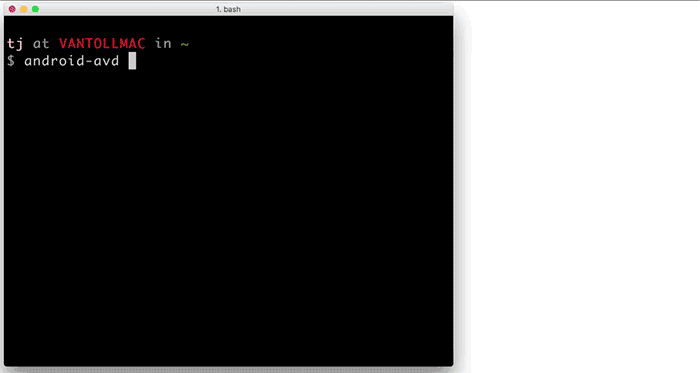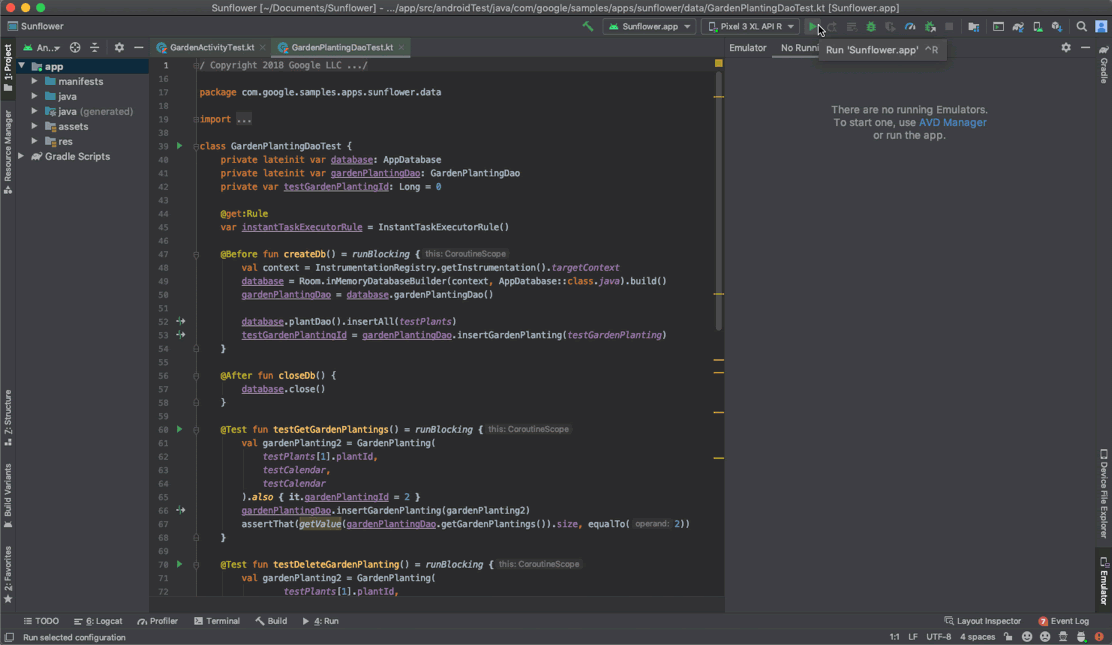
- RUN ANDROID EMULATOR ON MAC COMMAND LINE MAC OS
- RUN ANDROID EMULATOR ON MAC COMMAND LINE FOR ANDROID
- RUN ANDROID EMULATOR ON MAC COMMAND LINE TV
- RUN ANDROID EMULATOR ON MAC COMMAND LINE WINDOWS
RUN ANDROID EMULATOR ON MAC COMMAND LINE MAC OS
Mac OS Users must install Command-line tools.Static Analyzer Docker ImageĪutomated prebuilt docker image of MobSF Static Analyzer is available from DockerHub docker pull opensecurity/mobile-security-framework-mobsfĭocker run -it -p 8000:8000 opensecurity/mobile-security-framework-mobsf:latestĪlso Read Headless Burp – Automate security tests using Burp Suite Requirements Static Analysis
RUN ANDROID EMULATOR ON MAC COMMAND LINE FOR ANDROID
It can do dynamic application testing at runtime for Android apps and has Web API fuzzing capabilities powered by CapFuzz.

RUN ANDROID EMULATOR ON MAC COMMAND LINE WINDOWS
It can be used for effective and fast security analysis of Android, iOS and Windows mobile applications and support both binaries (APK, IPA & APPX ) and zipped source code. It is an alternative to run our project or start through the AVD Manager.Mobile Security Framework or MobSF is an automated, all-in-one mobile application (Android/iOS/Windows) pen-testing framework capable of performing static, dynamic and malware analysis. Using the emulator command, we will start an emulator. Android emulator lets you develop and test out the application without using a physical device. The Android SDK includes the Android device emulator. We can also drag an APKs file to install on an emulator, and then run them. While the emulator is running, we can run the Android Studio project and select the emulator as the target device. Launch the Emulator without first running an app In the toolbar, choose the AVD, which we want to run our app from the target device from the drop-down menu.ģ. This leads to open a Verify Configuration page.ġ.5 Change AVD properties if needed, and then click Finish.Ģ. The System Image page appears.ġ.4 Select the system image for the particular API level and click Next. If we don?t see the hardware profile we want, then we can create or import a hardware profile. Then Select Hardware page appears.ġ.3 Select a hardware profile and then click Next. To create a new AVD:-ġ.1 Open the AVD Manager by clicking Tools > AVD Manager.ġ.2 Click on Create Virtual Device, at the bottom of the AVD Manager dialog. In Android Studio, we need to create an Android Virtual Device (AVD) that the emulator can use to install and run your app.

To start the Android Emulator and run an application in our project:ġ. We can run an Android app form the Android Studio project, or we can run an app which is installed on the Android Emulator as we run any app on a device. To install the emulator component, select the Android Emulator component in the SDK Tools tab of the SDK Manager. However some components of emulator may or may not be installed while installing Android Studio. The Android emulator is installed while installing the Android Studio. HAXM 6.2.1 or later (recommended HAXM 7.2.0 or later).Windows: CPU with UG (unrestricted guest) support.The Android emulator takes additional requirements beyond the basic system requirement for Android Studio.
RUN ANDROID EMULATOR ON MAC COMMAND LINE TV
The Android emulator comes with predefined configurations for several Android phones, Wear OS, tablet, Android TV devices. For example, we can transfer data faster to the emulator than to a real device connected through USB. Testing Android applications on emulator are sometimes faster and easier than doing on a real device. It accesses the Google Play store, and much more Android emulator simulates rotation and other hardware sensors. It also gives the location of the device and simulates different network speeds. We can get the incoming phone calls and text messages. The Android emulator provides almost all the functionality of a real device. We can use the Android emulator as a target device to execute and test our Android application on our PC. The Android emulator is an Android Virtual Device (AVD), which represents a specific Android device.


 0 kommentar(er)
0 kommentar(er)
